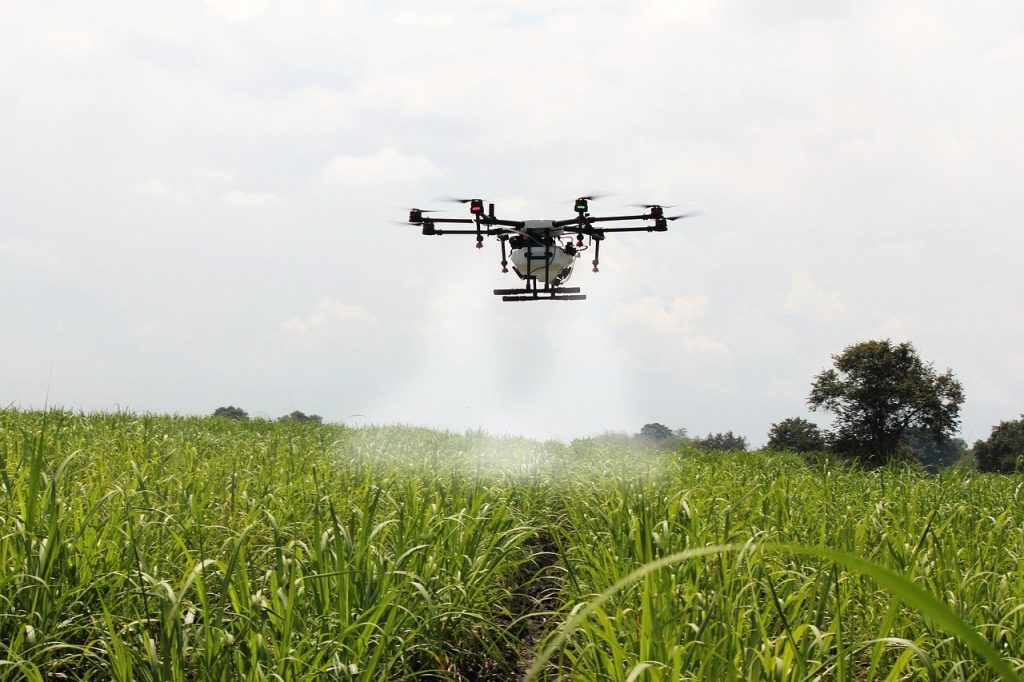Plant protection drone, also known as unmanned aerial vehicle, as the name suggests, is an unmanned aerial vehicle used for agricultural and forestry plant protection operations. This type of drone consists of a flight platform (fixed wing, helicopter, multi axis aircraft), navigation flight control, and spraying mechanism. Through ground remote control or navigation flight control, spraying operations can be achieved, including spraying chemicals, seeds, powders, etc. With the rapid development of drone technology, the more widely used “agricultural drone” is gradually replacing the “plant protection drone”. Agricultural drones are not only used for spraying and spraying, but also for various tasks such as fertilizer, seed, and feed spraying, meeting the diverse needs of farmers and improving production efficiency. Multiple drone companies are actively exploring agricultural solutions based on drone technology, jointly promoting the development, innovation, and progress of global agriculture. Plant protection drones can be divided into electric and oil powered based on their power, and can be divided into single rotor and multi rotor based on the number of rotors.
Plant protection drones are significantly ahead of traditional manual plant protection methods in terms of efficiency, safety, environmental protection, prevention and control effectiveness, and cost. Drones can complete 1-2 acres of pesticide spraying operations per minute, while the efficiency of manual pesticide spraying is about 2 acres per hour. Currently, the efficiency of drones is 30-60 times that of manual spraying. Considering the improvement of drone technology, land leveling, and scale, the leading advantage in drone efficiency will become increasingly significant. Drone plant protection has achieved the separation of humans and drugs. Through ground remote control or GPS flight control operation, spraying operators can operate remotely to avoid the danger of exposure to pesticides. Even when adding pesticides, automatic filling machines have been developed. Under artificial plant protection methods, prolonged contact between humans and pesticides is inevitable. It is reported that up to 100000 people experience poisoning symptoms every year when spraying pesticides. The plant protection UAV adopts the spray spraying method, which has the characteristics of low operating height, less drift, and hovering in the air. The downward airflow generated by the rotor during pesticide spraying helps to increase the penetration of logistics to crops, with good control effect. It can also save 50% of pesticide usage and 90% of water consumption, greatly reducing resource costs. The utilization rate of pesticides under artificial plant protection is only 30%. A large amount of pesticides enter the soil and rivers, causing environmental pollution, and a large amount of pesticide residues in grains. And drones can achieve spraying path planning, effectively avoiding the phenomenon of re spraying and missed spraying under manual methods, and ensuring better prevention and control effects.
Due to the continuous reduction of agricultural labor force, as well as the promotion of efficient agriculture and the development of smart agriculture, the mechanization and intelligence level of plant protection work has been further improved. Especially, plant protection drones with advantages such as high efficiency, good safety, wide applicability, and simple daily maintenance have been effectively promoted and applied in modern agricultural development. In 2021, the market size of China’s plant protection drones reached 11.634 billion yuan, A year-on-year increase of 27.44%.







Please sign in to comment
register